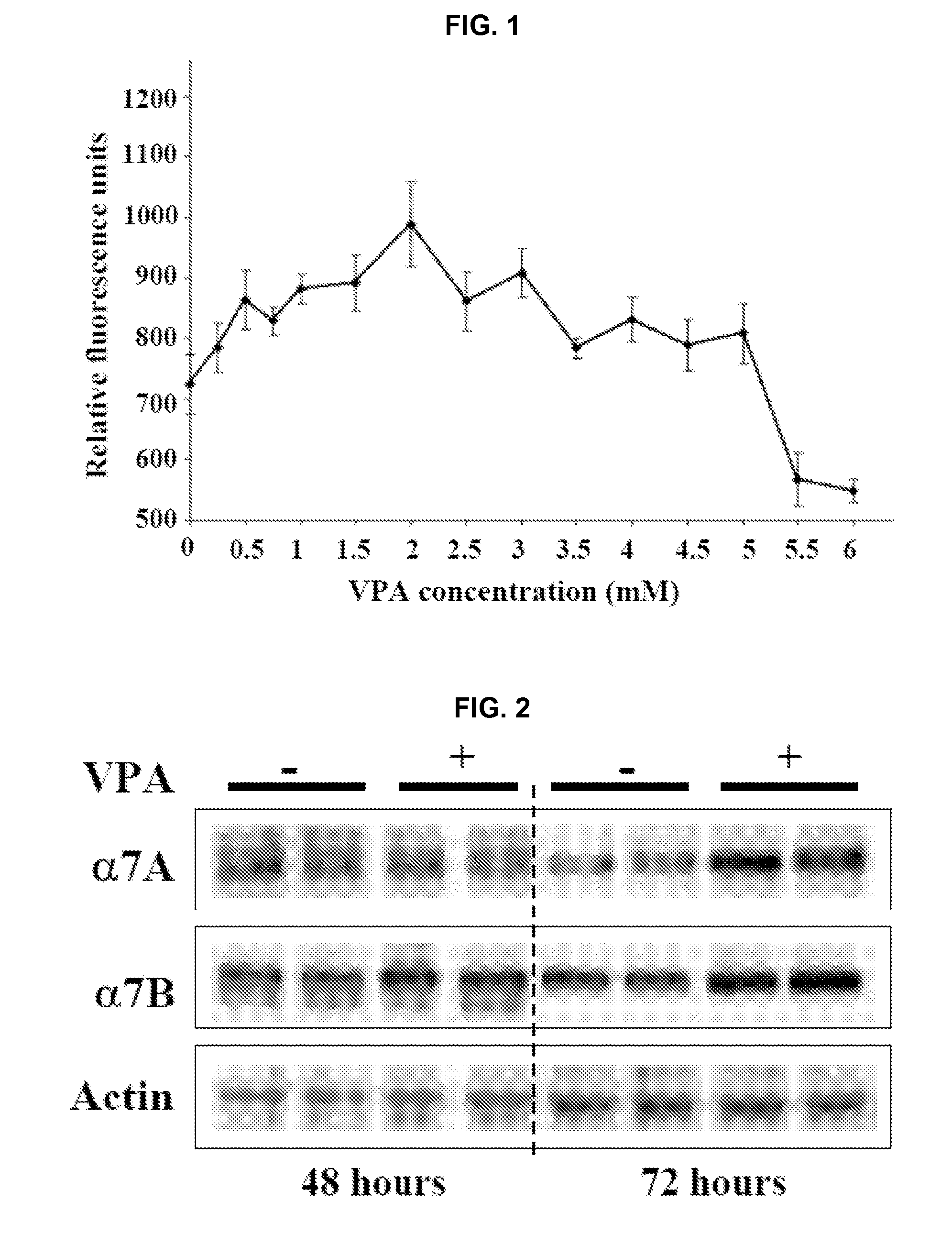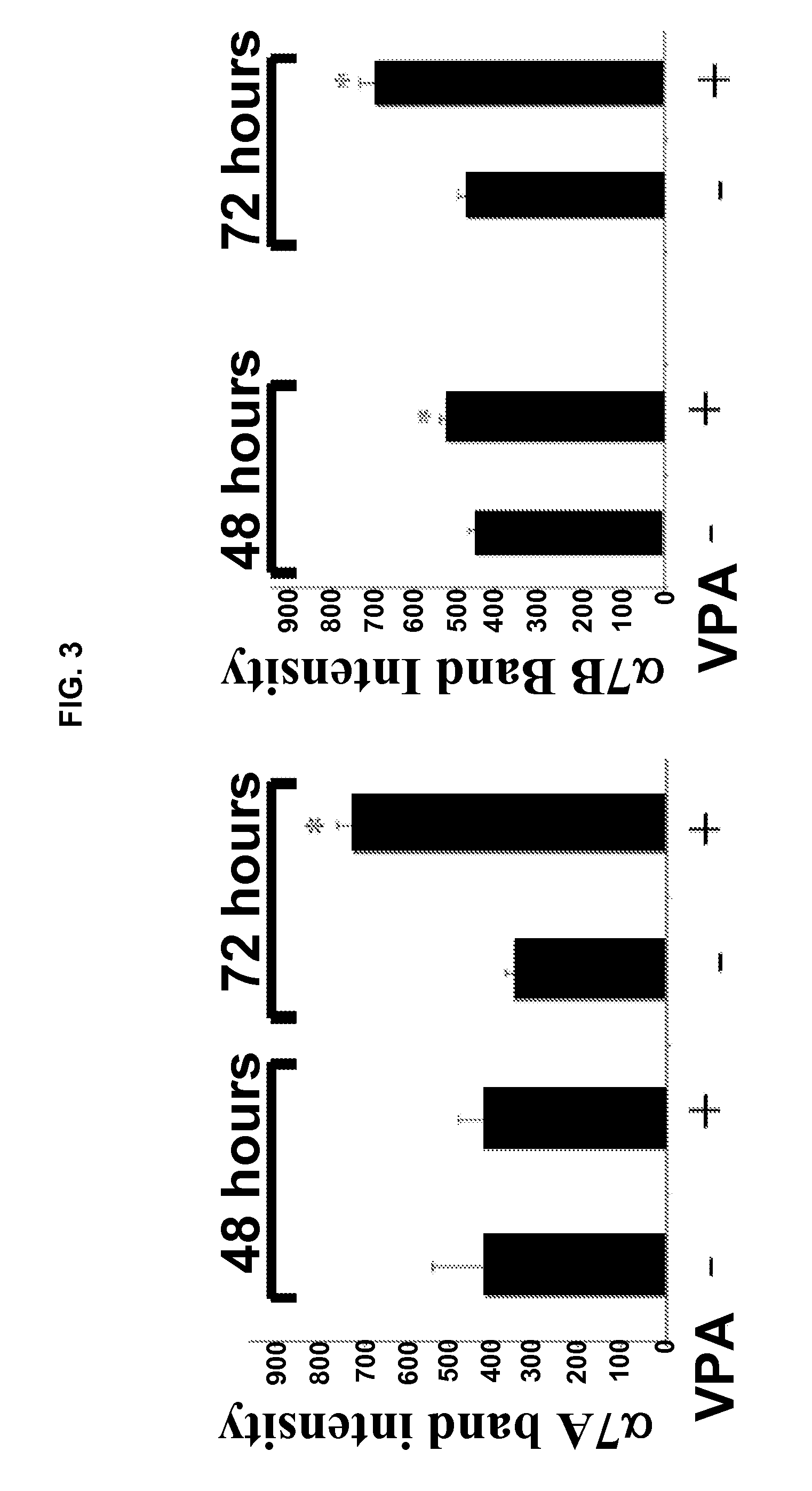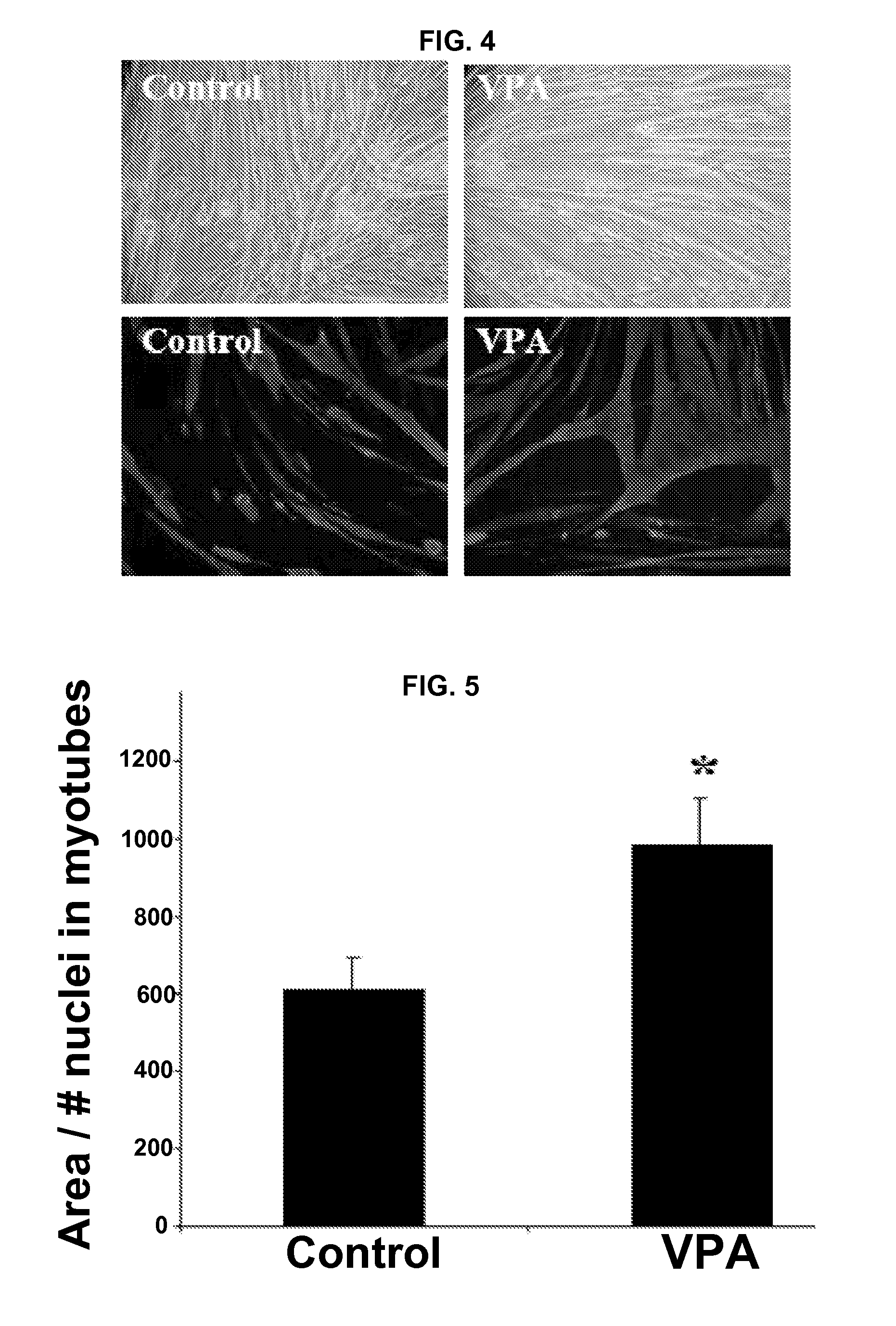Valproic acid, derivatives, analogues, and compositions including same and methods for their therapeutic use
a technology of valproic acid and derivatives, applied in the field of valproic acid, can solve the problems of not showing effective results in humans, and achieve the effects of enhancing the therapeutic effect of the active agent or active agent composition, reducing inflammation, and prolonging cell survival
- Summary
- Abstract
- Description
- Claims
- Application Information
AI Technical Summary
Benefits of technology
Problems solved by technology
Method used
Image
Examples
example 1
VPA Activates Akt both In Vitro and In Vivo
[0171]This example provides The disclosed results demonstrate for the first time that VPA is an activator of Akt in muscle, both in vitro and in vivo.
I. Materials and Methods
[0172]i. Antibodies and Other Reagents
[0173]Valproic acid was purchased from Sigma-Aldrich (St. Louis, Mo.). Rabbit polyclonal antibodies against activated and total Akt, mTOR, ERK, and p70S6k were purchased from Cell Signaling Technology (Danvers, Mass.). Rabbit polyclonal antibodies against the α7A and α7B integrin chain alternative cytoplasmic domains are described in Song, et al. J. Cell Sci. 106:1139-52 (1993). Expression of α7 integrin cytoplasmic domains during skeletal muscle development: alternate forms, conformational change, and homologies with serine / threonine kinases and tyrosine phosphatases, J. Cell Sci. 106:1139-52 (1993). F-20 mouse monoclonal antibody was used to detect myosin heavy chain. Wortmannin was purchased from Cell Signaling Technology. Antibo...
example 2
VPA-Mediated Amelioration of Muscle Pathology
[0230]This example illustrates VPA-mediated amelioration of muscle pathology in the dyW mouse model of merosin deficient congenital muscular dystrophy.
[0231]The congenital muscular dystrophies (CMD) are a diverse group of diseases with clinical features including hypotonia, weakness and contractures with variable disease progression. The incidence of CMD varies between 4.7 and 6.3 per 100,000 live births. Merosin deficient congenital muscular dystrophy (MDC1A) is considered the most common type, accounting for 30-40% of the CMDs.
[0232]MDC1A is caused by a mutation in the lama2 gene which encodes the laminin α2 chain. Laminins are heterotrimeric proteins composed of a heavy α chain and two structurally similar light chains (β and γ) and are a major component of the extracellular matrix (ECM). Laminin 111 (α1, β1, γ1) is the predominant isoform found in developing skeletal muscle with laminin 211 (α2, β1, γ1) being the predominant isoform i...
example 3
Therapeutic use of Valproic Acid in Cells from MDC1A Patients
[0260]This example illustrates the possible therapeutic use of VPA in cells from MDC1A patients.
[0261]The effect of VPA on promoting laminin-alpha2 expression in fibroblasts / myoblasts from MDC1A patients is determined by culturing control and MDC1A patient fibroblasts or myoblasts and treatins such with VPA at 0, 0.5 mM, 1 mM, 2 mM and 4 mM for 48 and 72 hours in triplicate. Laminin-alpha2 production from cells was then determined by any of the following assays: (1) immunofluorescence using anti-laminin-alpha2 antibody; (2) ELISA to detect human laminin; (3) RT-PCR to detect laminin-alpha2 chain; and (4) Western analysis to detect laminin-alpha2 chain. Data is analyzed by ANOVA to compare untreated and treated cells and between control and MDC1A cells. A 2-fold increase in the expression of laminin-alpha 2 indicates that VPA is capable of promoting laminin-alpha2 expression and promotes cell survival through activation of ...
PUM
| Property | Measurement | Unit |
|---|---|---|
| time | aaaaa | aaaaa |
| time | aaaaa | aaaaa |
| time | aaaaa | aaaaa |
Abstract
Description
Claims
Application Information
 Login to View More
Login to View More - R&D
- Intellectual Property
- Life Sciences
- Materials
- Tech Scout
- Unparalleled Data Quality
- Higher Quality Content
- 60% Fewer Hallucinations
Browse by: Latest US Patents, China's latest patents, Technical Efficacy Thesaurus, Application Domain, Technology Topic, Popular Technical Reports.
© 2025 PatSnap. All rights reserved.Legal|Privacy policy|Modern Slavery Act Transparency Statement|Sitemap|About US| Contact US: help@patsnap.com



